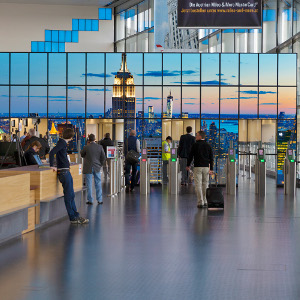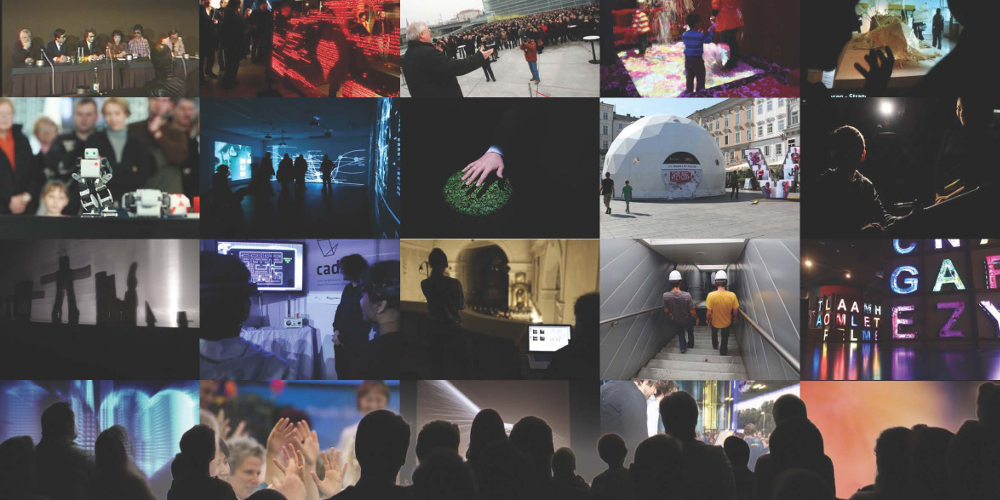Future Playground is a showcase of notable new developments by the Ars Electronica Futurelab and Ars Electronica Solutions. Michael Badics explains which interactive products and services Ars Electronica Solutions be showcasing there.
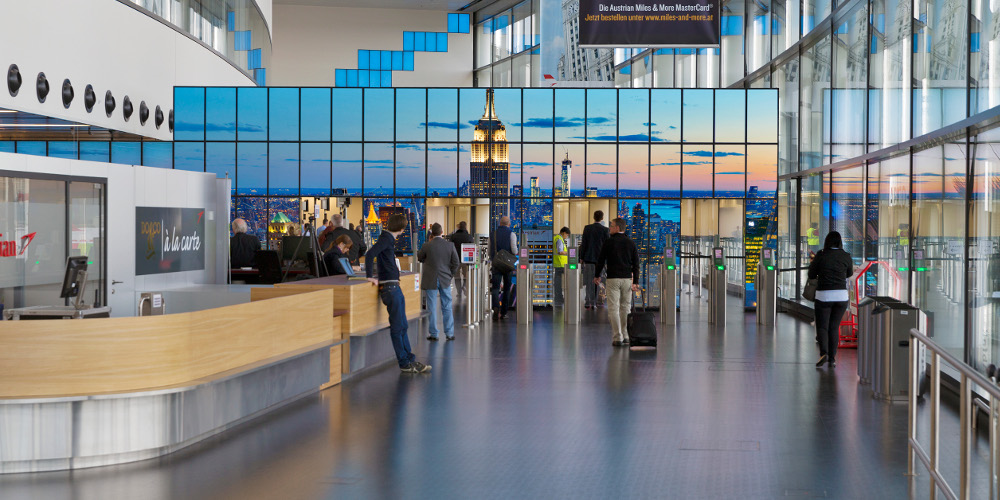 ZeitRaum / New York (Credit: Lois Lammerhuber, Martin Ackerl)
ZeitRaum / New York (Credit: Lois Lammerhuber, Martin Ackerl)
Future Playground is a showcase of notable new developments by the Ars Electronica Futurelab and Ars Electronica Solutions at 2014 Ars Electronica Festival. Visitors are invited use this perusal of what’s happening at the nexus of art, technology and society as an opportunity to give some thought to this year’s festival theme, change, at an interesting array of interactive exhibits, live performances, speeches and round-table discussions.
To find out more about what Ars Electronica Solutions has in store for us at the Future Playground, we sat down with Solutions CEO Michael Badics. He explained why Solutions and the Futurelab are sharing a festival location and which interactive products and services they’ll be showcasing there.
Michael, Ars Electronica Solutions will be presenting itself in two different modes at the festival …
Michael Badics: Right. First off, Ars Electronica Solutions is represented at various workshops, conferences and speeches. But besides than, we also want to spotlight some excellent examples of the work we’ve been doing over the last couple of years.
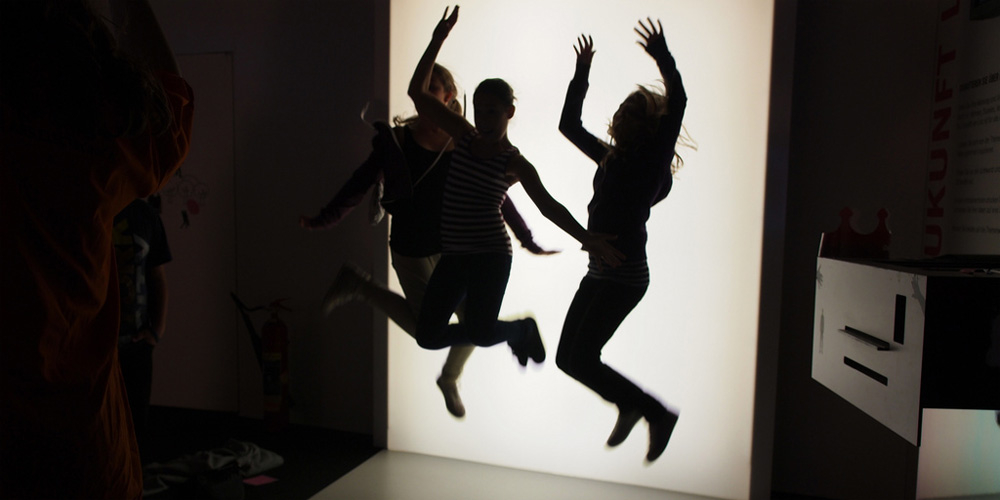 Shadowgram (Credit: Martin Hieslmair)
Shadowgram (Credit: Martin Hieslmair)
What, for example?
Michael Badics: For the most part, we’ll be presenting a selection of projects we’ve produced recently in the four major areas we’re active in: Brandlands & Exhibitions, Event & Show Design, Urban Media Development and Shop Experience.
For instance, festivalgoers will be able to experience Shadowgram from the Event & Show Design area. Shadowgram participants stand in front of an illuminated wall and are individually photographed. The result is a silhouette image that can be printed out as a sticker. Participants can then apply it to a poster or map together with a speech balloon in which they express their personal thoughts and opinions on a particular subject.
Plus, at the Ars Electronica Festival, we’ll be unveiling a new feature. We’ve enhanced Shadowgram with a digital dimension, whereby the speech balloon is depicted digitally on a screen or projection surface and assigned to a particular category. The upshot is to make the statements easier to evaluate and analyze. In line with the 2014 Ars Electronica Festival’s theme, the topic will be Change. What, in people’s opinion, has to be changed, or what do we have to change? Here, we want to establish a link-up to the Future Innovators Summit. The young Future Innovators ought to be confronted with what the general public thinks, to thereby elicit what these very promising young people have to say about it.
Is the Bienenstock [Beehive] project being reprised this year?
Michael Badics: Yes, Bienenstock is back. This project is an experiment in which video footage of major events—like this festival, for instance—shot individually by many different visitors is gathered and contextualized. The project headquarters will be in the Akademisches Gymnasium, where festivalgoers will be able to borrow an Actioncam to record their own personal impressions of the festival. At the moment, we’re working on an app to enable visitors to do this with their own mobile device so that anybody can take part without having to borrow equipment beforehand. Plus, the videos that are shot via the app get geo-referenced, which means that we know exactly where the video was made so we can reconstruct a visitor’s route through Festival City.
We’re also integrating GeoPulse, a Solutions project based on geographical information systems that makes it possible to portray any selected area – a region or an entire country. Cartographic material or aerial photographs can be interlinked with all sorts of data—statistics, demographics, simulations, real-time information, weather reports, traffic updates, the spectrum of potential data sources is unlimited. For the festival, we’ll be using material from visitors’ videos and thereby obtaining a very interesting picture of Linz during the Ars Electronica Festival. I’m really excited about this! We’ll get sort of a time-lapse image generated by lots of videos shot at a particular time at the same location, which will make it possible to see the city from a fantastic new point of view.
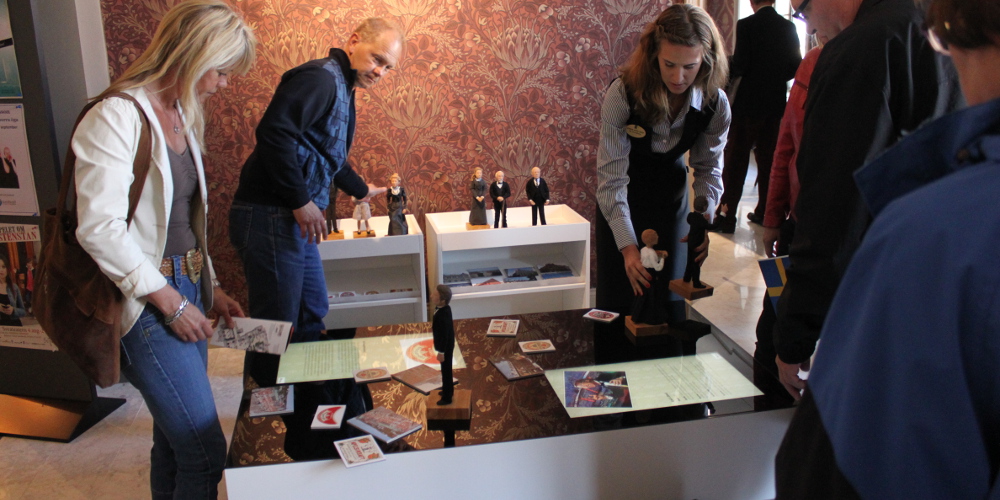 (In)Sights (Credit: Ars Electronica Solutions)
(In)Sights (Credit: Ars Electronica Solutions)
What projects from each of the four specialty sectors will be on display?
Michael Badics: To communicate Ars Electronica Solutions’ spectrum of capabilities, we’re going to exhibit various reference projects in the Future Playground in the gymnastics hall at Akademisches Gymnasium Linz. To do it, we’re using a new product named viPOS that we developed in cooperation with Umdasch Shopfitting. This is also designed to play up the flexibility and modularity of this new interactive product.
It’ll sort of go through the whole history of Solutions—all the projects, joint ventures, and concepts in which we’ve been involved in recent years. It’s almost like we’re setting up a trade fair booth.
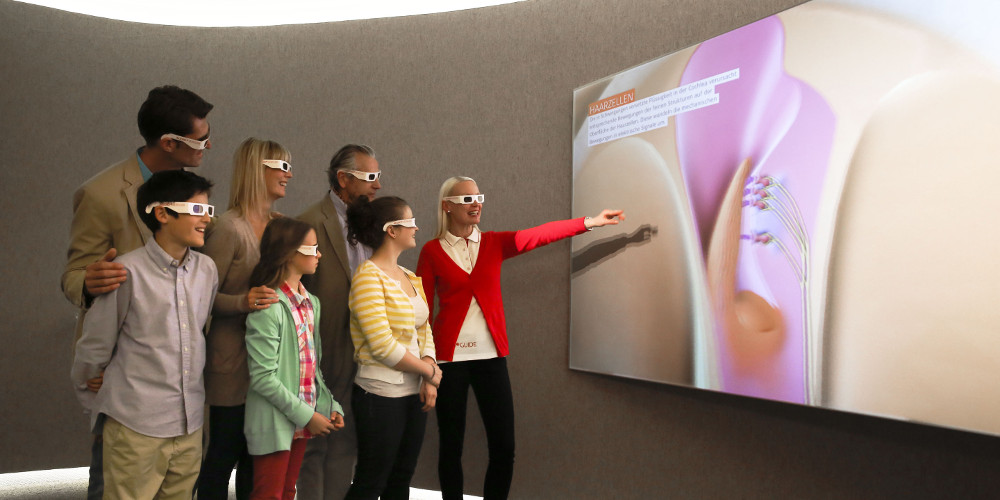 Virtuelles Ohr (Credit: Audioversum)
Virtuelles Ohr (Credit: Audioversum)
What projects will you be presenting?
Michael Badics: Ars Electronica Solutions’ core business is Brandlands & Exhibitions. Not only because we have a Center and not just because we know how to conceive and produce exhibitions; what’s special about Solutions is that we can deliver all the necessary elements, all the links in this process chain. We’re a one-stop shop: conception, implementation and operation. And in doing the job, we can rely on know-how available in Ars Electronica’s other divisions, above all the Futurelab. This really is a unique selling proposition, so, of course, we want to take advantage of this opportunity at the Festival to back this up with convincing proof.
In this area, we want to present examples from two exhibitions: Audioversum and L’Oracle du Papillon. The Audioversum exhibition has to do with hearing and how it functions. The question was: How do you sensitize people so that they can grasp what it really means to be hard of hearing? How it is when you get older? To get this across, we were commissioned by MED-EL, the worldwide leader in the field of auditory implants, to conceive and implement the Audioversum Science Center. This is what led to the Virtual Ear installation that lets visitors take a 3-D journey through the human hearing system. It starts with a microphone that records noises, sounds and visitors’ voices. Our application processes these acoustic events in real time and they’re visualized on the projection.
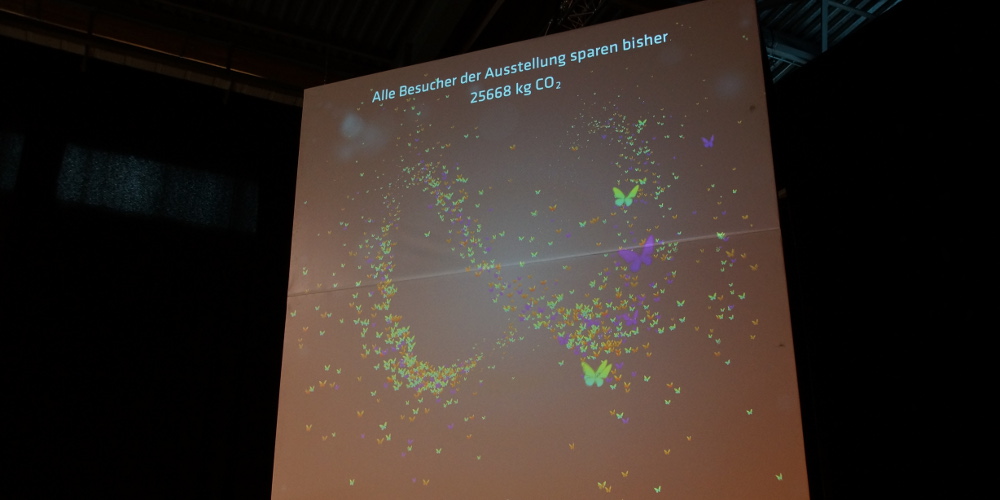 Solutions Center (Credit: Ars Electronica Solutions)
Solutions Center (Credit: Ars Electronica Solutions)
We’re also featuring L’Oracle du Papillon, an interactive exhibition we installed in Switzerland on the subject of sustainability. The material on display makes exhibition visitors aware of the little things they can do that make real contributions to sustainability. In this connection, our GeoPulse installation provides a fascinating way to explore the difference this makes over time. We call these individual steps “gestures,” things that anyone can do to actually make a small positive impact on our future – for instance, shutting off the water while you’re brushing your teeth, or not leaving electronic devices turned on and running in stand-by mode.
At the festival, we’ll be showing a selection of the various gestures, and visitors can choose the ones they like and make a personal commitment to them. Then, a visualization will show how many tons of CO2 would be saved if they actually follow through on this, and how much would be saved if all Linzers and all Austrians did likewise.
To illustrate how the Ars Electronica Futurelab and Solutions work together, we’re presenting what we did at Vienna International Airport: an installation entitled ZeitRaum [TimeSpace] for the Austrian Star Alliance Terminal check-in area. The Futurelab created a media art installation on 165 screens that engenders an imaginary space encompassing all airports throughout the world, and the centerpiece—a jumbo 15×9-meter screen with a 530 megapixel display—formulates the topography of this ZeitRaum. Now, enhancements implemented by Ars Electronica Solutions make it possible to also use this display in other contexts—for instance, five extraordinary gigapixel images of New York City that establish a link to Austrian Airlines.
In this interactive installation, you can see the transition from an artistic work to a more commercial application designed in a way to familiarize people with certain content. This is an excellent illustration of how the Futurelab and Solutions mesh. What we’re especially eager to demonstrate at the festival is that Ars Electronica is one entity encompassing divisions that specialize in different areas but that interact, and that one segues into the other. That’s why the Ars Electronica Futurelab and Ars Electronica Solutions are sharing a location at the Ars Electronica Festival.
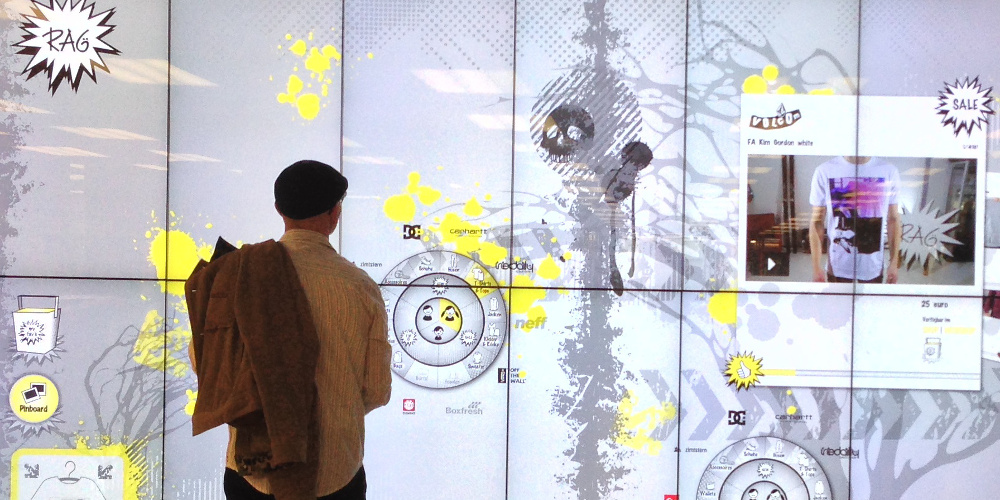 Rag Shopping Wall (Credit: Ars Electronica Solutions)
Rag Shopping Wall (Credit: Ars Electronica Solutions)
What projects will you be presenting from the other areas?
Michael Badics: We’ll also have something from what we call Shop Experience, a special realm of the public sphere. Shops are increasingly beset by the virtual world, so what’s called for now is consideration of how shops might be conceived to successfully compete with the Web. We have to give some thought to how we can take certain kinds of information and the high degree of flexibility that’s usually available strictly digitally, and input it into real life without losing the haptic experience that constitutes the big advantage of shops. At the Ars Electronica Festival, we’ll be featuring viPOS, a product we developed in cooperation with Umdasch Shopfitting, Europe’s leading shop design firm. Of course, Umdasch Shopfitting has unrivalled expertise in shop design; what we bring to the table are insights into digital media, staging content and interaction with customers. We know how to interlink virtual and real worlds and merge them in a retail environment. This brings many of the advantages of the internet into the shop, and the shop’s advantages remain intact.
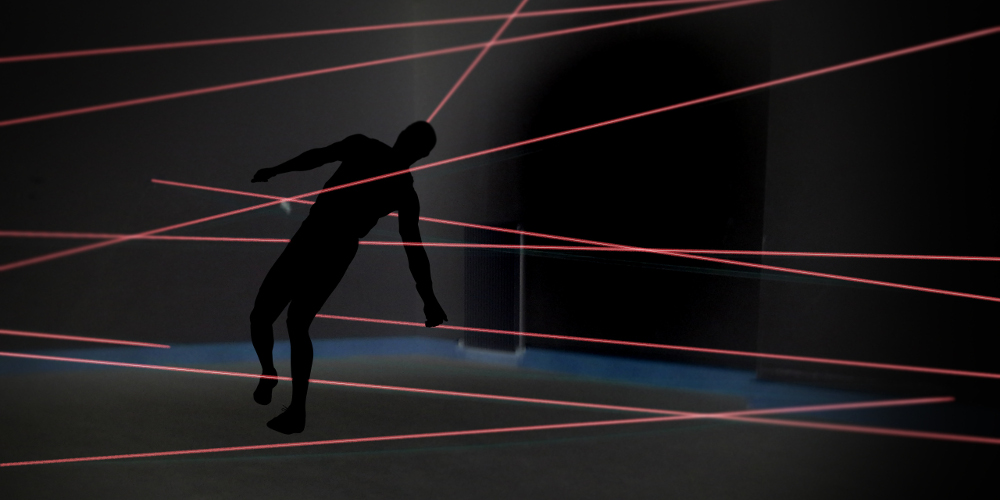 Laser Game (Credit: Ars Electronica Solutions)
Laser Game (Credit: Ars Electronica Solutions)
Will festivalgoers be seeing anything new?
Michael Badics: Definitely! To show off a great way to use technology, we’ll be playing a laser game at the Ars Electronica Festival that puts the accent on having fun. Really: enjoyment of the game. But the hidden agenda is to show how high-tech can be used and made accessible by average, everyday people. And that high-energy lasers aren’t the only kind.
We’ll also be presenting an interactive table on which you can work with cards. These are simple postcards, but when they’re placed onto the table, they generate descriptions of all of Ars Electronica Solutions’ projects. Future Playground visitors can take these cards along with them as a reminder of how beautifully analog and digital elements can be dovetailed.
The Future Playground is situated at the gym hall of Akademisches Gymnasium Linz and is opend during the 2014 Ars Electronica Festival from THU September 4 – MON September 8 2014, 10 AM – 9 PM. Find more information: https://ars.electronica.art/c/en/future-playground
